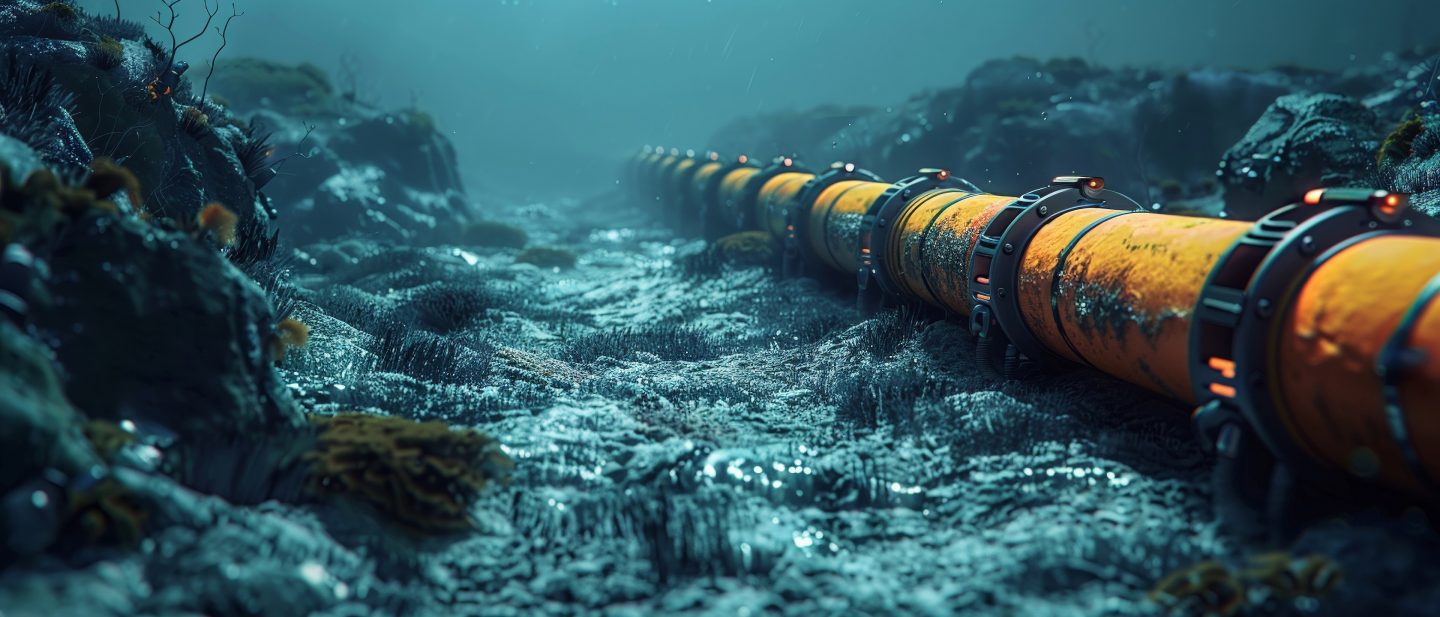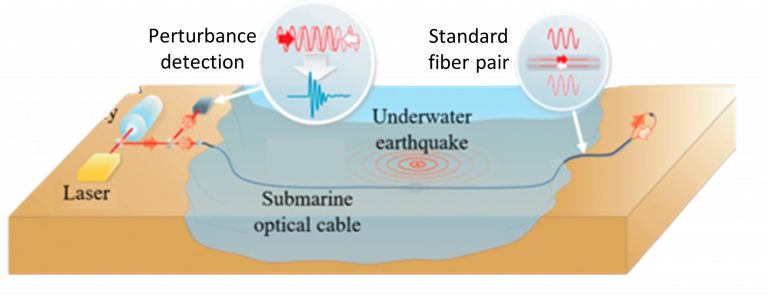
The ambitious research project is called FOCUS. Several universities in France, England, Italy and Germany as well as private companies have joined forces to investigate the possibility of fibre optic monitoring of active faults on the seabed. One of the private companies is the French company IDIL Fibre Optics, which specialises in laser and fibre optic technologies. LAPP has developed a customised special cable for this purpose on behalf of IDIL.
The researchers’ basic idea was to use the so-called optical laser reflectometry (Brillouin Optical Time Domain Reflectometry/ BOTDR). This is normally used to monitor bridges or dams. The research object was the seabed around 26 kilometres off Catania in Sicily. This is where a telecommunications cable runs and not far from there is Mount Etna, which at 3,357 metres is the highest active volcano in Europe. With the help of the cable developed by LAPP, numerous geodetic instruments and seismological stations, the load on the telecommunications cable off the coast of Sicily was calibrated over a length of six kilometres and at a depth of 2,100 metres. The long-term goal is to develop telecommunication cables that automatically measure tectonic changes.
There is already a network of underwater telecommunications cables covering around one million kilometres at the bottom of our oceans. If these were adapted accordingly, it would be possible to create a huge seismological monitoring instrument that could detect sudden deformations in the deep sea almost in real time. To explore the options and challenges, the European Research Council ERC has launched the FOCUS project (Fibre Optic Cable Use for Seismic Hazard and Deformation Studies on the Seabed and Deformation). The project, funded with over 3.5 million euros, was launched in autumn 2018 and is due to be completed in 2025.
Fiber optic cables can collect seismological data
By installing distributed Brillouin sensors, it would be possible to track all underwater movements such as deformations. The project would give the telecommunication fibre optic cables a double benefit. Indeed, the high sensitivity of fibre optic cables would make it possible to collect data on earthquakes that start in the middle of the ocean and are too weak to be recorded by current seismological land and sea stations.
Optical laser reflectometry is a method for determining and analysing electromagnetic waves and signals in the wave range of light. A laser pulse with a duration of 3 ns to 20 µs is shot into an optical fibre and the backscattered light is measured over time. If the cable is disturbed by stretching or temperature fluctuations, the measurement data at the relevant point also changes. In the FOCUS project, the researchers want to prove that this technology can measure small displacements of one to two centimetres at the test site off the coast of Sicily.


The French private company IDIL fibre optics is responsible for the laser reflectometry measurements. The geodetic stations on the seabed regularly exchange data, and the speed of sound in the water is also continuously measured. In addition, the stations are equipped with pressure sensors and inclinometers to ensure that the recorded movements do not result in displacements of a single instrument.
LAPP has developed an underwater strain measurement cable for the FOCUS project. This cable is laid 20 cm deep in the seabed to ensure its stability. It consists of 10 single-mode optical fibres, copper conductors and 2 optical trisens cables with stainless steel tube, surrounded by TPU and polyurethane jackets for better protection. Designed for demanding environments, this cable offers robust electrical properties and high mechanical resistance, including an operating temperature range of -30 to +80°C and a maximum tensile strength of 1500 daN. This cable therefore enables a laboratory to transmit data for real-time measurement.
The development of the cable was challenging because at a depth of 2000 metres, pressure can affect the structural integrity of cables and sensors. In addition, temperature fluctuations, which are often very small, can influence deformation measurements and the dielectric behaviour of cables. Laying cables in the seabed is also complex. Deep-sea operations require special research vessels and ROVs (remotely operated vehicles). And it must be ensured that the cable remains in place despite ocean currents and other underwater activities.
LAPP offers a complete solution
Loic Rampi, responsible for Technology & Business Development at LAPP: “The customer IDIL initially needed a complex prototype of a one kilometre long cable from us. And we were able to offer a complete solution that included product development, production, integration and qualification.” The challenge was that the team at LAPP had to develop a completely new product, in which highly sensitive optical fibres had to be integrated into the cable. The development process took place over a period of one year. The solution developed offers several advantages: The cable acts as a sensitive sensor along its entire length, enabling continuous and precise monitoring. This is a small revolution for the market, as such technology has never been used before.
The vision now is to develop a new generation of hybrid cables made of telecommunications fibres and sensors in the future and make them the new standard. This would allow telecoms cables to be used simultaneously to monitor movements on the seabed worldwide. If the project is successful, the 70% of the earth’s surface that is covered by water could serve as a gigantic seismological network.
